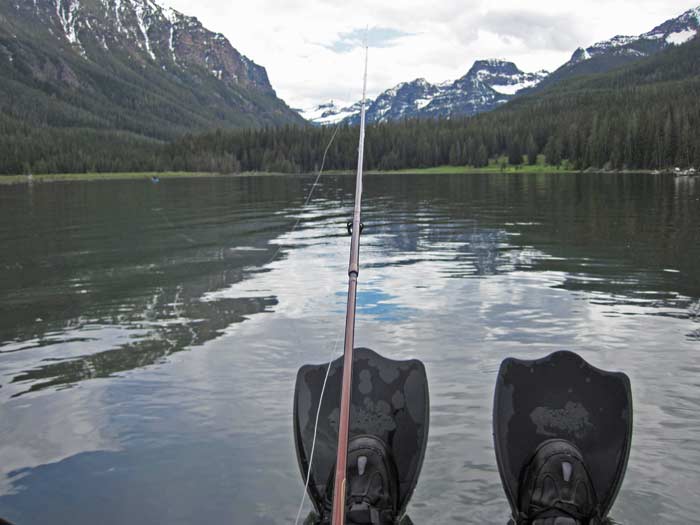It’s something every photographer dreads. And if you shoot pictures on or near water, it’s bound to happen at some point. Fly fishermen are especially at risk, and sooner or later you are going to do it to: drop your camera in the water.
Sunday Shane and I went fishing on the local small water. It was windy as hell, and we both knew it was going to be a shitty day, but we went anyway. We worked upstream from the access, and the only action of the day was one fish that grabbed a $3 Dip only long enough for me to feel a pull. So, we decided to stop and make a fire.
Winter fishing days just wouldn’t be complete without a fire on the bank. It’s just part of the game. Yesterday was the first fire of the winter season, and indeed my first campfire in probably about two years. There is nothing better than the cheery crackling and popping and the smoky smell of a campfire on the riverbank.
Before we stopped and got the fire going, Shane pulled out the camera to get some pictures. However, the bank he stopped on was steep and super slick with mud. One misstep later, and the camera, and Shane, were in the water. This isn’t the first time misfortune has befallen Shane’s camera. One of the very first times he ever had it out, it was on a tripod that slowly, oh so slowly, tipped and fell into the Gallatin. It survived that, somewhat amazingly.
The camera yesterday was yanked from the water fairly quickly and in the process of drying all the bits and pieces out, the memory card slipped and fell into the mud of the river bottom. It took us about a minute of frenzied searching to find it. Don’t try that at home.
If this calamity does happen to you, all is not lost. Well, actually, it probably is, but here is what you can do to at least say you tried:
- Swear. Swear loudly. It won’t help anything, but it sure as hell will make you feel better.
- Immediately pull the battery pack and memory cards. Wipe them off and set them out to dry. Word of the wise (as noted above) – make sure they can’t fall into the river.
- Wipe off as much water as you can with your shirt, jacket, towel, or whatever you happen to have handy. If there is an attractive female member of the party, convince her that her shirt will somehow be the very best at drying, and she needs to take it off and hand it over.
- Cut the trip short. If you are floating, you’re screwed. But if you can walk back to the truck and go home, do it.
- If you have a DSLR, pull the lens off, but only if you have the cap for the camera body and the lens. No need to get any extra dirt or grime in there.
- The moment you get home, fill a bowl with white, uncooked rice and add your camera. You should cover your camera with the rice. Put any piece of the camera that got wet into the rice, including lens, battery, memory card, etc.
- Rice is a cheap and effective desiccant. You can also buy desiccant packs from your local camera shop. If you have them, use them. Place your camera and other affected parts in zip lock bags with the packs and seal them tightly.
- Leave it be for at least 24 hours. A couple days is better. Place the bowls or bags in a dry place where they won’t accidentally get messed with.
- Once that time has passed, try turning it on. If it doesn’t work, put it back in the rice and leave it for another day. If it still doesn’t work, well, you’re SOL. Pop a cold one.
- If it does turn on, take it down to the local camera shop to be professionally cleaned. Don’t put this off. Even if all the water does dry off, the residue it leaves behind can impact performance.
I got a text earlier saying that Shane’s camera has survived to shoot another day. Thanks to quick action and a rugged build, it has made it through more than most cameras will ever see. Say what you will about Nikons, but they make a rugged product…
If you want to stay one step ahead of the game and take preventive measures, there are a ton of great housings, cases, and covers for any camera shape and type. Some of these are very elaborate, made for scuba diving. Others amount to little more than a plastic bag covering the camera. All of them will add at least some measure of protection from the elements and yourself.
If you do happen to dunk your camera, it’s not the end of the world. Up your chances by following these steps, and you should make it out just fine.


